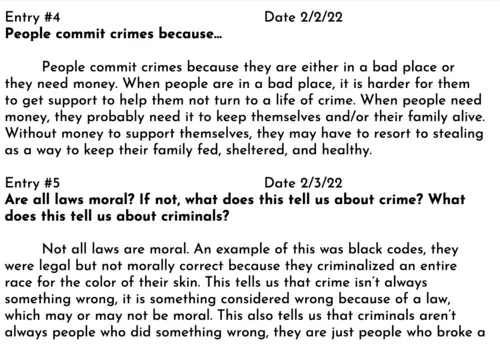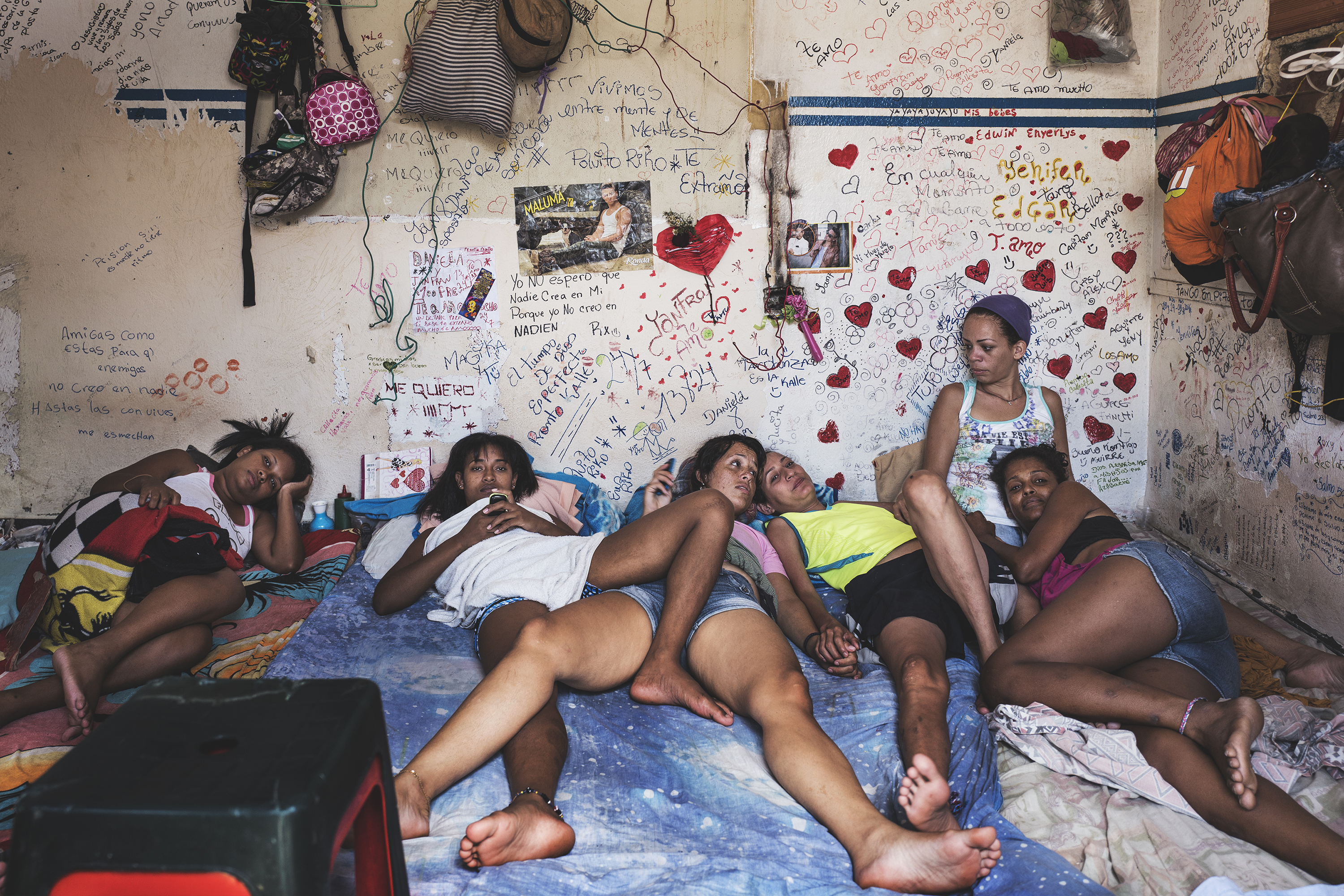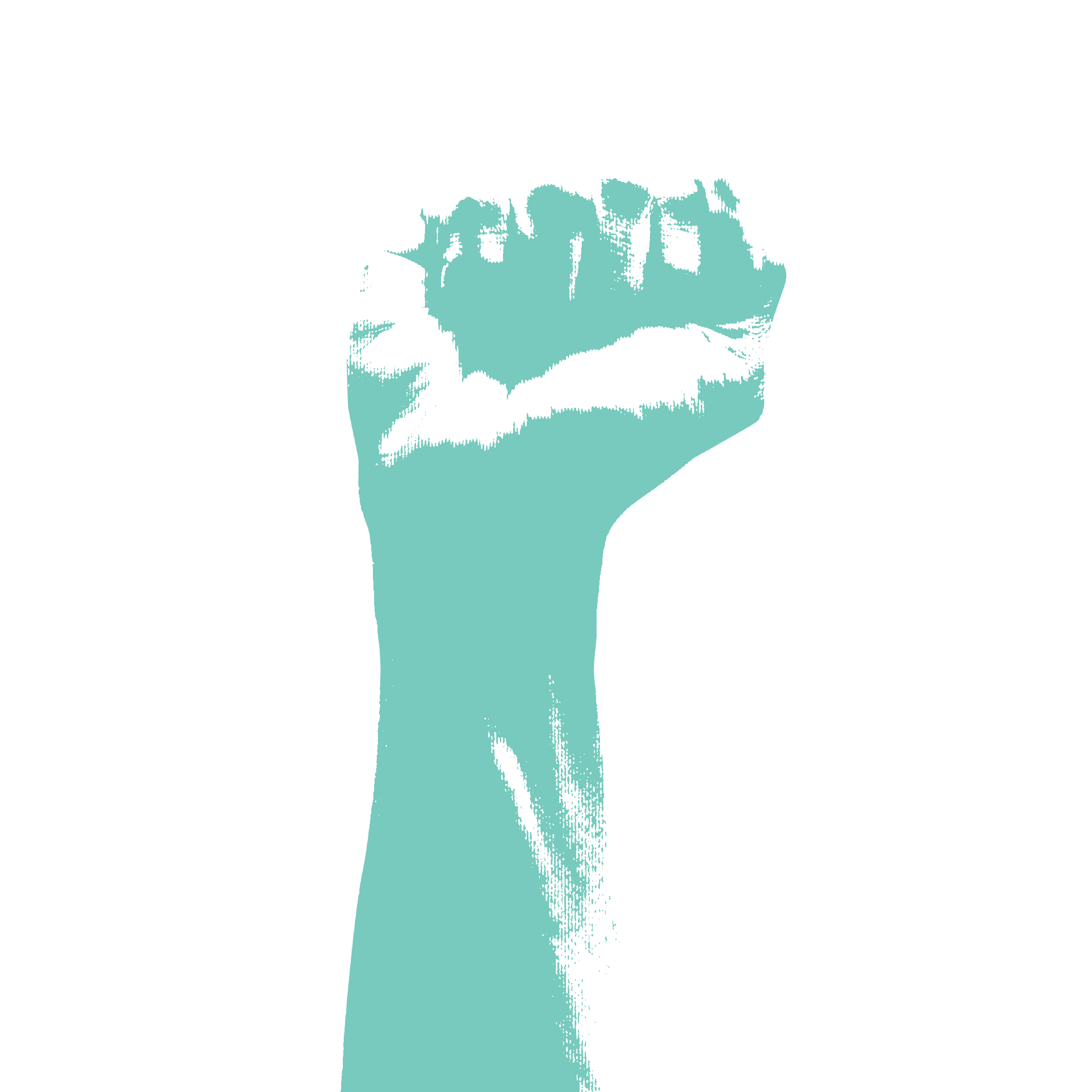This unit was created by Kristin Leffler, a middle school social studies teacher in Portland, ME, as part of the 2021-2022 Pulitzer Center Teacher Fellowship program "Journalism and Justice: Elevating Underreported Stories in the Classroom." It is designed for facilitation across approximately 18-20 45-minute minute live or virtual class periods.
For more units created by Pulitzer Center Teacher Fellows in this cohort, click here.
Objectives:
Students will be able to…
- Challenge their preconceptions about people who are currently, or were formerly, incarcerated.
- Apply a historical lens to analyzing the roots of the current state of the incarceration system in the U.S.
- Read, analyze and compare/contrast stories related to incarceration.
- Research the debate around a local juvenile detention center and write a letter to lawmakers expressing their opinions on the future of the detention center.
- Reflect on prison reform/abolition and what it would take to create a world without prisons.
Essential Question:
How can understanding stories of those who are incarcerated help us create a more just world?
Unit Overview:
Imagine a World Without Prisons is an 8th grade social studies unit that challenges students to apply their prior knowledge of constitutional amendments, the judicial branch, racism, and ideas of justice to explore the historic roots and present-day realities of incarceration in the United States. Throughout the unit, students will keep a digital journal to track their understandings, biases, opinions, questions, and learning growth regarding themes such as legality vs. morality, history and economics of the prison system and criminalization, societal effects of incarceration, prison reform, and prison abolition. Students will explore dozens of resources, including Pulitzer Center-supported news stories, that allow them to hear from voices inside the carceral system and answer the main unit inquiry question: “How can understanding stories of those who are incarcerated help us create a more just world?”
This unit is structured around an Inquiry and Imagination framework, which allows students to construct their own questions and imagine creative solutions to pressing problems. In addition to their individual journals, students will frequently discuss unit themes with their peers and delve into their own research about the ongoing debate about whether to close a local juvenile detention center in their city. The final assessment will have students synthesize sources from the unit in order to write a letter to lawmakers that expresses their opinion on what the future of the local detention center should be. Ultimately, students will reflect on their growth as researchers and writers. They will also be able to explain what societal changes would need to happen in order to build a world without prisons.
Unit Sub-Inquiries:
What are the historical roots of the incarceration system in the U.S.?
How does the incarceration system affect society?
Why do prisons exist and what would it take to create a world without them?
Unit inquiries prior to this unit:
What are amendment rights?
What is the role of the judicial branch in the United States?
What are different parts of the justice system?
Performance Task:
- Ongoing digital “Justice Journal” Entries responding to exit ticket questions each day.
- Culminating Project: Write a letter to Maine lawmakers to express what you think should happen to the Long Creek Juvenile Detention Center. Integrate data and statistics, interviews, and research from the unit plan as evidence to support your argument. This performance task is designed with instructions and materials that can be easily adapted to connect to issues facing youth in juvenile detention centers in any state.
Twenty-lesson unit plan for teachers, including pacing, texts and multimedia resources, leveled texts, guiding questions for group discussions, and performance task instructions and grading rubric for the unit.
Unit Resources:
Common Core Standards:
CCSS.ELA-LITERACY.RH.6-8.2: Determine the central ideas or information of a primary or secondary source; provide an accurate summary of the source distinct from prior knowledge or opinions.
CCSS.ELA-LITERACY.RH.6-8.6: Identify aspects of a text that reveal an author's point of view or purpose (e.g., loaded language, inclusion or avoidance of particular facts).
CCSS.ELA-LITERACY.RH.6-8.7: Integrate visual information (e.g., in charts, graphs, photographs, videos, or maps) with other information in print and digital texts.
Maine Social Studies Standards (8th grade):
Civics & Government: Analyzing how people influence government and work for the common good including voting, writing to legislators,
performing community service, and engaging in civil disobedience through selecting, planning, and implementing a civic
action or service-learning project based on a school, community, or state asset or need, and analyze the project’s
effectiveness and civic contribution.
This unit is structured around an Inquiry and Imagination framework, which allows students to construct their own questions and imagine creative solutions to pressing problems. In addition to their individual journals, students will frequently discuss unit themes with their peers and delve into their own research about the ongoing debate about whether to close a local juvenile detention center in their city. Here are example of students' brainstorms and reflections:

The final assessment will have students synthesize sources from the unit in order to write a letter to lawmakers that expresses their opinion on what the future of the local detention center should be. Here are examples of their final letters:


















